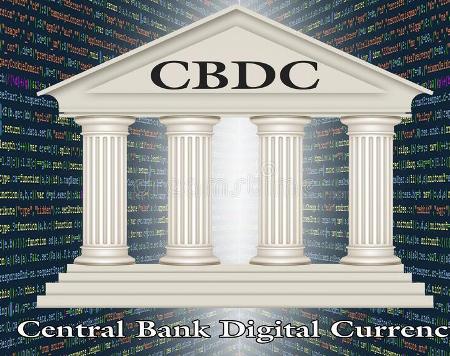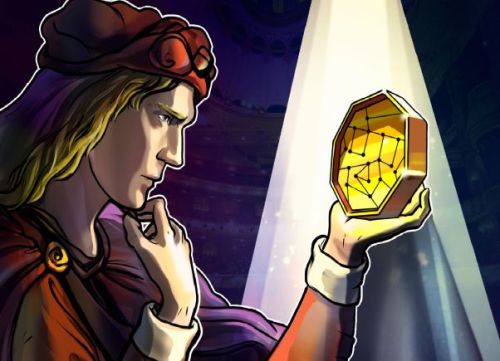 March 2022
March 2022
March 09, 2022 President Biden signs an executive order directing the US Government to study the development of a digital dollar.
This may not seem like a subject for a computer newsletter but computers and mobile devices will be at the heart of any Central Bank Digital Currency.
While the US is a long way from actually having a digital currency the first step has finally been taken. Many argue that this should have been done long ago. Other countries like China have had a digital currency, (with over 140 million “wallets”) for some time now. Even the Bahamas had a digital currency, (the Sand Dollar). Neither of these examples has the power and dominance of the US dollar. Let alone being the worlds reserve currency however it shows just how much competition is out there. According to the ECB’s chief Christine Lagarde, over 80 central banks are considering digital currencies.
There is a war going on here, an economic war and right now the USA isn’t winning. Since the end of the Second World War the US dollar has been the king of currencies. By treaty or law commercial business around the world is conducted in dollars. Oil is priced in dollars, corn, wheat, pork bellies, gold, silver, copper, coffee, cotton, sugar and so on are bought and sold with dollars. Arms deals are transacted in dollars even illegal stuff like drug deals are done in dollars because people trust that the value of the dollar will remain stable.

This gives the US great power to regulate trade and go after bad actors. It also allows us to “export” our inflation around the world. But cracks are beginning to appear in the armor. Russia and China have done deals between themselves and other small countries using their own currencies. So far this is a small issue but now the Saudi’s are considering selling oil in yuan rather than dollars or euros.
This could cascade into a downward spiral for the dollar and if that happens it will happen fast. In the early 1920’s Germany was the shinning star of Europe. In 1921 five-hundred-thousand marks would buy you a very fine house. In 1923 it would buy you a loaf of bread. If you think it can’t happen here just look at the inflation during the last year. And every time our congress spends another trillion or so that we don’t have it gets worse.
The "fact Sheet" from the White House on development of digital assets is long on hyperbole but very short on details. The article on CBDC or the article on The U.S. Dollar in the Age of Digital Transformation from the Federal Reserve are light on both. So, at this time what do we know?
What is CBDC?
Central Bank Digital Currency is just the digital version of the legal fiat currency used in a country. It is issued by that country’s central bank and tied to the country’s national currency. It is not a decentralized private currency like Bitcoin (BTC) or Ethereum (ETH). Most CBDC implementations will not use or need any sort of a distributed ledger like a blockchain. All that would be handled by the central bank.
Cryptocurrency and Digital Currency
CBDC’s are not a cryptocurrency. There are more than fifteen hundred cryptocurrencies listed on coinmarketcap.com. That is more than all the fiat currencies in the world and more are being added all the time. Not to mention the thousands of cryptocurrencies that are not list on the exchange.
Although the news media often refers to any digital currency as “crypto” that is not actually true. For example, Bitcoin (BTC) is a digital currency which uses encryption to control the creation of monetary units and verify the transfer of funds. That is why they call it a cryptocurrency. In the case of CBDC’s the central bank controls the creation of CBDC’s just as they control the creation of money now.
Retail Central Bank Digital Currencies
Retail CBDC’s would be issued to the general public. Consumers are able to own a CBDC in a digital wallet or account and use it for payments.
Wholesale Central Bank Digital Currencies
Wholesale CBDC’s would be issued to banks and other financial institutions. They could be used to settle transactions more quickly. Not only would it improve the efficiency of domestic payments it could also make cross-border payments much easier.
In a way most people have had a digital version of the dollar for some time in the form of bank accounts, online transactions, credit or debit cards and various payment apps like PayPal. In such examples the money used is a liability of a private entities. If the private entity does not have the resources to cover these liabilities the users may be at risk. (Remember when the online trading platform Robinhood froze up last year?)

With a CBDC the liability is on the central bank so liquidity is not a problem. If needed they just create more funds to cover these liabilities. Something they have had a lot of practice doing in the last few decades.
In the event of a bank failure the holder of a CBDC wallet is not at risk since the funds are issued by the central bank. Before you say that it couldn’t happen here the USA had five-hundred-sixty-one bank failures between 2001 and 2021. For those of you who are too young to remember Silverado Savings (1988) or Washington Mutual (2008) just google them up.
Between 1930 and 1933 over nine thousand banks closed their doors. Before the creation of the FDIC bank failures were so common that many people wouldn’t put their money in a bank. They thought it was safer to keep it under the bed. Which made the banking system even less stable since faith in the institution is critical to the banking industry.
Other related questions:
How much is CBDC worth? The same as that country’s fiat currency. The digital version is tied to the physical currency. The problem here is fiat currencies like the Chinese Yuan that are not exchange traded currencies. What is a Yuan worth? Whatever the Chinese say it is worth. Not a very good basis for trust.
How many CBDC’s are in circulation? The same at the number of fiat currency units that country has in circulation. They are the same thing or at least close cousins.
Why have a CBDC?
According to the White House fact sheet the Executive Order calls for measures to:
- Protect U.S. Consumers, Investors, and Businesses
- Protect U.S. and Global Financial Stability and Mitigate Systemic Risk
- Mitigate the Illicit Finance and National Security Risks Posed by the Illicit Use of Digital Assets
- Promote U.S. Leadership in Technology and Economic Competitiveness to Reinforce U.S. Leadership in the Global Financial System
- Promote Equitable Access to Safe and Affordable Financial Services
- Support Technological Advances and Ensure Responsible Development and Use of Digital Assets
Well that all sounds good but let’s dig a little deeper. A “digital dollar” would increase the “footprint” of the dollar. Millions of people around the world do not have a bank account. Due to geography or other restrictions, they are not in the banking system. Remember that much of the world still works for five dollars a day and live in remote areas where access to a traditional bank just doesn’t exist. But they do have a smart phone.
In some places like Venezuela people use cryptocurrency like Bitcoin (BTC) because of hyperinflation the local fiat currency is worthless. The use of such digital currency is technically illegal by local law but they don’t have much choice. To get food and other necessities they must go “underground” to find a payment system and conduct business.
Many of these people would love to have an account denominated in US dollars having these people using the US currency, (even if only in small amounts) would strengthen the dollar against other currencies like the Yuan. It would also give these people access to the banking system and a possible path out of poverty that they didn’t have before.
In cases like the distribution of relief checks during the recent Covid pandemic having a CBDC would have made payments to citizens much easier, almost instantaneous and much more secure.

Is there a downside to CBDC’s?
Oh, my YES! Especially if you are the consumer! To the central bank most of these disadvantages are actually advantages which is why it will eventually happen.
To begin with you are trusting the central bank to manage things in a digital world. They have very little experience in the digital world. Central banks, by definition should be focused on long term stability. For the last two decades the US Federal Reserve has been very much focused on short-term problems at the expense of the long term. The short comings of the US Federal Reserve would fill volumes and is way beyond the scope of this newsletter. None the less the central bank would have complete control over financial transactions.
Another disadvantage would be the total loss of privacy for users. The central bank can see and track every penny you make or spend. If that doesn’t send a chill down your spine maybe you need to check for a pulse.
And another disadvantage would be the difficulty in attaining widespread adoption. There will be a lot of “push back” from traditional banks since it basically cuts them out of the picture. It will also push a lot of people into alternative currencies. Without almost universal support the CBDC doesn’t work because the central bank doesn’t have full control.
Still another and rather scary disadvantage is negative interest rates. Since you can’t withdraw your CBDC tokens and keep them under the mattress this gives the central banks the ability to impose negative interest rates. Since interest rates have been near the floor since 2008, I think we could expect that central banks would have little reluctance to push them through the floor. Spend it or lose it as a motivation to increase consumer spending. There is no incentive to save money. Eventually there will be no option for cash.
Yet another disadvantage is inflation control. The US Federal Reserve has had a target of two percent inflation per year. While that may seem like a great idea now, during the Trump presidency inflation was below two percent and that caused the US Federal Reserve considerable heartburn because they couldn’t figure out why the rate remained so low. With CBDC that is not a problem, they just take two percent of your tokens away every year. Once again, we have a dis-incentive to save money.And still another disadvantage is the programmability of money. This is probably the scariest disadvantage of all. One of the main problems that central banks have with monetary stimulus programs is that they control the price of money (interest rates) but not the velocity of money. With CBDC the central bank can decrease or increase the velocity of money as they see fit. For example:
- Expiration of money. With CBDC’s the central back could implement an expiration policy. If you don’t spend the specified funds by, say the end of the month they will expire. China has already experimented with such a policy using their own CBDC.
- The so called “Helicopter money” (thank you Ben Bernanke) could be delivered instantaneously and efficiently directly to the pockets of citizens. As opposed to the traditional method of Quantitative Easing (QE) which relies on outside or independent financial institutions.
- Lending will change greatly. Since traditional banks and savings and loans will have a diminished role in lending the central bank will move in to fill that gap. If you want a mortgage or a business loan just fill out the form on your “4 Freedom” App and the central bank will get back to you.
And the “big daddy’ of disadvantages, customizable or personalized monetary policy. The issues of traceability, the absence of cash and programmability raise some serious ethical questions. They also raise the likelihood personalized monetary policy. With a big data bank of information on individual spending, saving and investing habits combined with a digital identification infrastructure the central bank will have enough information to tailor its monetary policy.
If it is known that a certain group of individuals have a higher propensity to consume then stimulus could be delivered directly to them. Even worse the system could be politicized. A government could segment its voters and identify areas where they are behind in the polls. Then deliver a special stimulus to those areas. Central banks are supposedly independent but if we can politicize a pandemic then surely, we can politicize a bank.

CBDC’s are not just a trendy extension of cryptocurrencies. They are an opposing force, a trap. They are a mechanism of control that those of us who grew up in a free society can hardly even imagine. But they are coming!
Getting ready for CBDC
This will not happen overnight. Nobody can just push a button and instantaneously we have CBDC’s everywhere. Incrementalism will a key factor in implementing such a program. This may seem like a wild conspiracy theory now but like so many other “conspiracy theories” that have turned out to be true CBDC’s are in your future.
With all the uncertainty and technological change knowing how to prepare for the coming of CBDC’s is a difficult question to answer. Here are a few generalized answers:
-
Investment Vehicles
The technologies and infrastructure needed to develop CBDC’s will be some of the most important discoveries of the twenty first century. Investing in some of these opportunities could (note the word could) be very profitable for investors with the foresight and fortitude to get in early. -
Physical Assets
One of the most obvious plans is to reduce your investment in fiat currency allocation in favor of physical asset ownership. Maybe productive real estate or precious metals or other alternatives that do not offer central banks the same level of controllability and traceability. -
Alternative Currencies
CBDC’s will encourage more investment in cryptocurrencies but not just any cryptocurrency will do. Bitcoin (BTC) for example would not be a good choice. Everyone on the blockchain can see who transferred to who, how much and when. Not exactly a private or secret transaction. In fact, authorities have been known to trace many transactions and recover funds.
The problem with most of the current choices in cryptocurrencies is that they are transparent. Privacy coins that offer a finite supply and anonymity like Monero (XMR) may be a good choice.
How to structure the CBDC implementation and maintain user privacy while giving the central bank the control it needs will be extremely difficult. They must retain the public trust if the implementation is to be successful.
Protecting ourselves from some of these high risks will take some very creative thinking and bold actions. In short, buckle up!
What do you think?
And remember — always back it up!